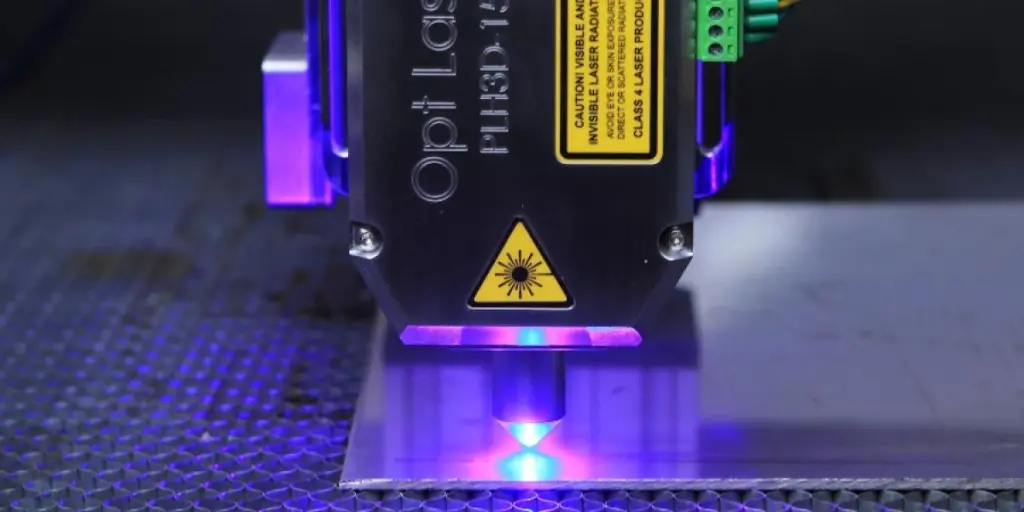Laser machines can be used to produce permanent markings and engravings on a range of materials. Suitable for logos, labels, serial numbers, or product PINs, laser markings and engravings offer advantages like affordability, flexibility, and extreme precision.
Increasing demand for precise and permanent marking across industries leads to the demand for laser technology. According to market research, the global laser marking machine market was at USD 2.80 billion in 2021, with an estimated growth of 8.2% by 2030.
Laser marking and engraving have been gaining popularity among the many choices in the market due to high-quality and durable marking. However, while these two techniques may seem similar, they have different characteristics.
This article will explore the differences between laser marking and laser engraving in order to help businesses confidently select the right solution for their needs.
Table of Contents
Overview of laser marking
Overview of laser engraving
Key differences between laser marking and engraving
Conclusion
Overview of laser marking
Laser marking is a laser-based process that increases the durability, readability, and contrast of markings on a surface. Laser marking involves using a high-powered laser beam to create permanent marks on a surface.
The laser beams interact with the material, causing a chemical or physical alteration instead of just burning away the material’s surface, resulting in a contrasting mark. It creates a permanent mark without removing material from the surface.
Laser marking is commonly used on metals, plastics, ceramics, glass, and other materials.
Some of the key features of the laser marking process are as follows:
Marking is achieved when a laser marking machine moves a powered beam across the material’s surface using the discoloration method, which produces high-contrast marks without disturbing the material.
The laser heats the material, oxidizing the surface and turning the material black. Then, it applies low heat to the metal to anneal the surface, which happens while leaving the material’s surface intact.
Laser marking applications
The laser marking process is commonly used for:
- Barcodes
- Logos
- Part numbers
- Trademark icons
- Date codes
- QR codes
- Serial numbers.
Laser marking machines are mostly used in aerospace, automotive, medical, electronics, and semiconductors industries.
Advantages of laser marking
- Laser marking is fast.
- It’s generally cheaper than other options.
- Laser marking is precise.
- It is suitable for large-scale production.
- The laser marking machine needs little maintenance.
- It is ideal for small customization.
- It does not remove material from the workpiece.
Disadvantages of laser marking
- The marked part can’t undergo long-term wear or chemical corrosion as it doesn’t create deep engravings.
- Laser marking may not be suitable for reflective or transparent materials.
- It may affect heat-sensitive materials due to the heat the process generates.
Overview of laser engraving

Like laser marking, laser engraving utilizes a high-powered laser beam to create marking on a material. However, unlike laser marking, the laser engraving machine uses a beam that vaporizes or removes the material’s surface resulting in a deeper and more pronounced mark.
The laser beam creates deep, permanent designs like a chisel on the workpiece surface. Laser engraving is a popular marking method for materials subject to wear and corrosion.
Laser engraving is mainly used on leather, wood, acrylic, stones, and certain metals such as stainless steel. Moreover, the process is compatible with other metals like brass and titanium.
With fiber and CO2 laser marking machines, one can use them on materials such as fiberglass, wood, and paper. It is, therefore, suitable for both metal and organic materials.
In the laser engraving process, the laser beam physically removes the material’s surface to expose a cavity that shows an image or design at eye level.
High heat produced by the laser engraving machine causes the material to vaporize. This is a quick process, and the material vaporizes with each pulse creating a cavity on the workpiece surface noticeable to the eye and through touch.
One can create deeper marks with the laser engraving system by repeating several passes on the material.
Laser engraving application
Laser engraving is used to mark parts and products in different industries, such as:
- Aerospace
- Jewelry
- Medical
- Automotive
- Fine arts
- Electronics
- Semiconductor

Advantages of laser engraving
- It has a broader range of depths: laser engraved marks can be shallow or deep, depending on one’s needs and preferences.
- Laser-engraved marks remain visible even under harsh conditions.
- It produces high-detailed and elaborate designs with exceptional precision.
- It is more legible for small items such as watches and jewelry.
Disadvantages of laser engraving
- It is a slower process compared to laser marking.
- It is not suitable for all materials, especially reflective and heat-sensitive ones.
- It requires more energy due to the high-intensity laser engraving machine.
Key differences between laser marking and engraving
While both laser marking and laser engraving involve using a laser beam to create permanent marks, they differ with regard to the following:
- The processes – laser marking alters the material’s surface, while laser engraving removes or vaporizes the surface layer creating a deeper and more pronounced mark than laser marking.
- Durability – laser engraving is more durable than laser markings because it is deeper and more resistant to wear and corrosion.
- Flexibility – one can use laser marking on more materials than laser engraving as the process produces heat unsuitable for heat-sensitive materials.
- Cost – laser engraving is more expensive than laser marking. It needs highly intensive engraving machines, which are costlier and use more power.
Factors to consider when choosing between laser marking and engraving
When choosing between a laser marking machine or an engraver, one needs to consider several factors, such as:
- The materials – some materials, like wood and leather, are better with engraving, while others are better with laser marking.
- Budget – if you have a lower budget, consider using laser marking, as it is cheaper than laser engraving.
- Durability – if you need your material to last long, laser engraving is better as it withstands wear and corrosion.
- Speed – if you need your laser markings done quickly, laser marking is faster than laser engraving and is more suitable for high-volume production.
- Level of detail – if you need a detailed design, laser engraving gives more elaborate designs than laser marking.
- Applicable materials – some materials are better with laser engraving than laser marking. For instance, wood and leather are better with laser engraving.
Conclusion
Laser marking and engraving are both valuable techniques for getting permanent marks on materials. However, these two processes are different, and understanding their differences will help get the best machines for the process.
Laser marking offers precise and fast markings. Therefore, it is ideal for identification and branding, while laser engraving provides deeper engravings suitable for complex designs and decorative applications.
You should consider the needs of your consumers when choosing the best laser marking machines. Moreover, you need to consider your customers’ budget, the durability of their products, and production capacity to recommend a suitable laser marking machine.
To browse a range of laser marking machines and their accessories, visit Alibaba.com.




